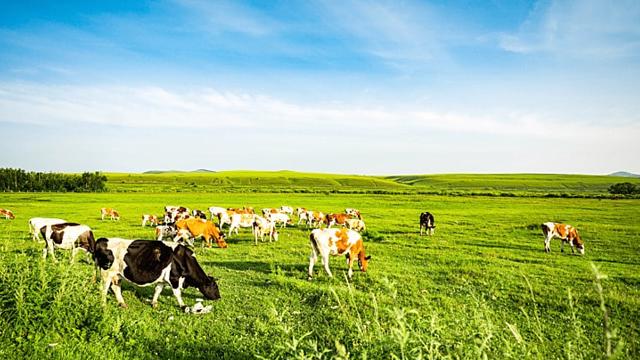[ad_1]
According to statistics from the Ministry of Agriculture and Rural Development of Ho Chi Minh City, the livestock situation in the city has deteriorated by early April 2023. In concrete terms, the total pig herd in the city is currently around 138,965 head, which are reared in more than 1,477 households and pig farms. Compared to the same period in 2022, the total number of pigs on livestock farms has decreased by 15.6% and the number of breeding households by 16.17%. The total dairy herd in the city is approximately 49,859 animals raised in 3,696 households, a decrease of 17.08% in number and 10.36% in household number over the same period.
Information on the decline in the herd of pigs and dairy cows in the city, said Ms. Le Dinh Ha Thanh, deputy director of the Animal Health and Livestock Subdivision, Department of Agriculture and Rural Development of Ho Chi Minh City Although the number of livestock has declined is in line with the city’s policy of gradually reducing the scale of small-scale farming and developing large-scale animal husbandry.
Regarding the causes of the decline in livestock, Ho Chi Minh City’s Ministry of Agriculture and Rural Development said the rapid rate of urbanization is affecting land used for agricultural production, such as building barns and growing grass for greenery Forage for livestock, thereby affecting the development of livestock farming.
“Currently, the cost of production is higher than the selling price of the product on the market, leaving farmers unprofitable or even at a loss. In addition, the epidemic situation across the country is still complicated, especially dangerous infectious diseases, emerging diseases such as African swine fever, although there is a vaccine to prevent the disease, it has not been popularized, so farmers are still afraid of in to invest in the expansion and development of livestock production,” said Ms. Thanh.
Not only the livestock industry, but also the livestock industry and the production of ornamental fish in the city are showing signs of weakness. According to the fisheries sub-department of the Ministry of Agriculture and Rural Development of Ho Chi Minh City, the number of ornamental fish produced in the region reached more than 37 million in the first months of this year, down 11.3% of ornamental fish exports reached 4.1 million pieces, down 0.5% from the same period last year. Europe is still the export market with almost 65% of Ho Chi Minh City’s ornamental fish exports, followed by the Asian markets with 28.5% of the production.
Referring to the cause of the decline in ornamental fish stocks, Mr. Le Cong Truong, deputy director of the Fisheries Subdivision, Ministry of Agriculture and Rural Development of Ho Chi Minh City, said that a number of ornamental fish farms in Ho Chi Minh Binh Chanh city and Cu Chi districts temporarily halted production as the domestic and export ornamental fish market was not thriving and was impacted by the global economy. At the same time, some popular ornamental fish, such as carp, guppies, ratfish, etc., were relocated to neighboring provinces, such as Tien Giang, Long An…, resulting in the reduction of the above amount.
In order to promote industrialization and modernization of agricultural development, Ho Chi Minh City strives for the development of animal husbandry in the direction of focusing on the production of high-quality breeding animals and increasing the number of large-scale agricultural enterprises with industrial applications, high technology, mechanization.
The Ministry of Agriculture and Rural Development of Ho Chi Minh City also proposed a series of solutions for animal husbandry development, emphasizing propaganda and mobilizing people to quickly reduce the scale of domestic animal husbandry and to greatly increase the scale of animal husbandry. Animal husbandry, participation in cooperatives and cooperative groups.
In addition, the department also focuses on cattle vaccination and supports human vaccination costs. Continue to maintain and expand areas and facilities safe from animal diseases, contribute to the sustainable development of animal husbandry, and examine ways of solving difficulties in building barns and ancillary works on agricultural land to invest in animal husbandry development can.
However, according to the Ministry of Agriculture, Development and Rural Affairs of Ho Chi Minh City, the implementation of the goals still faces many difficulties, due to some problems in the construction of barns and ancillary works on agricultural land Technology, only built on other agricultural land .
[ad_2]
Source link

